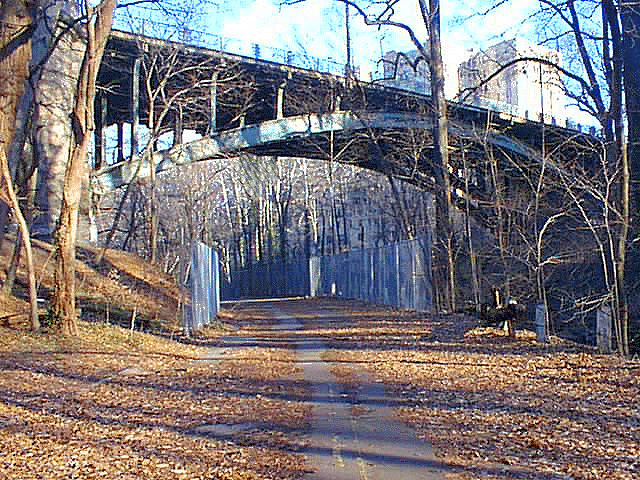Environmental
Consequences

In 1988, and when Klingle Road was still opened, the Department of
Consumer and Regulatory Affairs conducted, under an agreement with the
Environmental Protection Agency, a biological survey of many of the
streams in the District of Columbia. This little tributary next to
Klingle Road was included. The
study concluded that Klingle Road supported one of the more ecological
balanced and natural aquatic faunal communities in the District.
Klingle Valley in its present condition
represents an environmental and human health hazard. Berger 3-61.
Rebuild Klingle Road to its Original Alignment:
Following the repair or replacement of
the existing drainage structures, long-term beneficial impacts would be
expected from a reduction in erosion associated with uncontrolled runoff
during high-flow events. Berger study, 3-10.
Repair of the existing system would
result in short-term adverse impacts, but provide long-term benefits to
biological resources in Klingle Valley.
Repairing the existing system would create short-term adverse impacts
but would provide long-term benefits to the flora and fauna communities
in the project area.
Repair of the existing system would help
to reduce erosion and subsequent sedimentation associated with high-flow
storm events.
On-going habitat degradation or loss
associated with erosion, sedimentation, and degraded water quality would
be reduced, thereby resulting in an overall improvement in habitat
quality in the project area. Berger study, 3-18
Long-term impacts to the floodplain
would be expected due to the modification of the stream channel
resulting from the repair of the retaining wall. On the other
hand, the repair of the stormwater and drainage system would stabilize
flows, thereby allowing the stream to reach equilibrium and providing
long-term benefits. Berger study, 3-30.
James J. Shabelski, PE, Water and Sewer Design Branch, WASA,
states, "Under this alternative, to rebuilding Klingle Road to its
Original and Alignment and Dimensions and repair/replace storm drainage,
all infrastructure should be built to current standards and codes.
Based on prior DC DPW studies, it would appear that the construction of
a new storm drain in the paved road from Woodley Road to Porter Street
is the optimum solution. The channel along Klingle
Road should be restored to natural conditions as required by the
National Park Service." Berger Appendix A, Agency
Coordination
|

